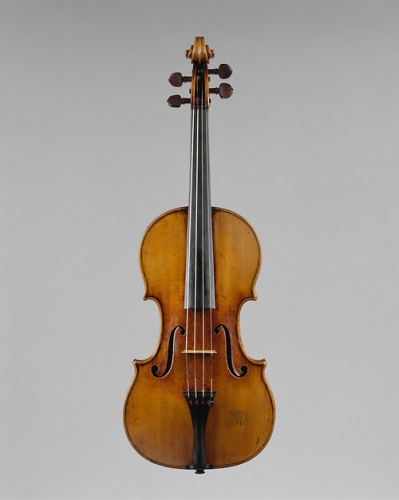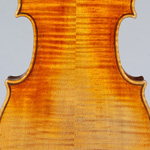Antonio Stradivari (Italian, 1644–1737)
Violin, The Antonius, 1711
Spruce, maple, ebony; 8 x 23 in. (20.3 x 58.4 cm)
The Metropolitan Museum of Art, New York, Bequest of Annie Bolton Matthews Bryant, 1933 (34.86.1 a)
Built by the most famous of all luthiers, Antonio Stradivari, The Antonius dates to his golden period, about 1700 to 1720. The violin’s body has an arched (carved) top and back. Internally, the instrument has a bass bar that runs vertically on the underside of the top (or belly) and a sound post to transmit vibrations from the top to the back. The violin has distinctive f-shaped sound holes and four strings that are played with a bow.
Stradivari has long been thought to have been an apprentice of Nicolò Amati, but census documents do not list Stradivari as a garzone (shop boy) in the Amati household. Stradivari’s early instruments do show the stylistic influence of the Amati, but as Girolamo II and Nicolò were the principal makers in Cremona during Stradivari’s formative years, it would be natural for Stradivari to have been influenced by their work. Antonio Stradivari worked with two of his sons, Francesco (1671–1743) and Omobono (1679–1742), and today more than six hundred instruments survive from this prodigious workshop. Stradivari experimented with the shape and arching of the violin. Stradivari employed flatter arching than his predecessors, and this contributed to the production of a more powerful tone.
YouTube: Stradivari violin, The Antonius, played by Eric Grossman (full version).
Heilbrunn Timeline of Art History: “Violin Makers: Nicolò Amati (1596–1684) and Antonio Stradivari (ca. 1644–1737)“


 Met Guitars App
Met Guitars App
